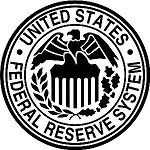GUALFIN, ARGENTINA – Another miracle! It rained.
“We got 200 millimeters (about 8 inches) this year,” reported the capataz, Gustavo.
After two years of drought, finally, the fields, mountains, and pastures are green. And the river that separates the house from the rest of the ranch – usually dry – is running fast.
“Yes, everybody’s happy now,” Gustavo continued. “Water was all we needed.”
Off to the Races
Meanwhile, stocks dropped another 420 points on the Dow yesterday.
Bond yields rose to 2.8%. Investors thought Fed chief Powell seemed serious in his drive to destroy some $2 trillion worth of the very stuff on which stock and bond prices float – liquidity.
Over the last 30-some years, the U.S. economy has been “financialized.”
Finance generally, and liquidity in particular, played a larger and larger role, while actual business – providing products and services – declined.
Main Street went down. Wall Street went up. Debt increased. And gradually, the whole economy became misshapen by false price signals and too much debt.
Behind this trend, of course, is money itself.
You could say its source is the introduction of fake money by President Nixon in 1971.
Or you could focus on the 30-year period after Alan Greenspan removed the last impediment to runaway finance by backing the stock market with Fed policy.
Since then, it has been off to the races, with debt rising three to six times faster than income. U.S. government debt rose eight times. The stock market rose 11 times. And the economy that supports both of them only went up four times.
As we will show next week, investors in the U.S. stock market thought they were profiting from the Great American Enterprise Machine.
Instead, they were unwitting accomplices to a huge fraud… in which most citizens were robbed to transfer money to the elite.
A Soft Landing
But today, we’re focusing – again – on the heist itself, and trying to understand if, when, and how the money goes back to its rightful owners.














Leave A Comment